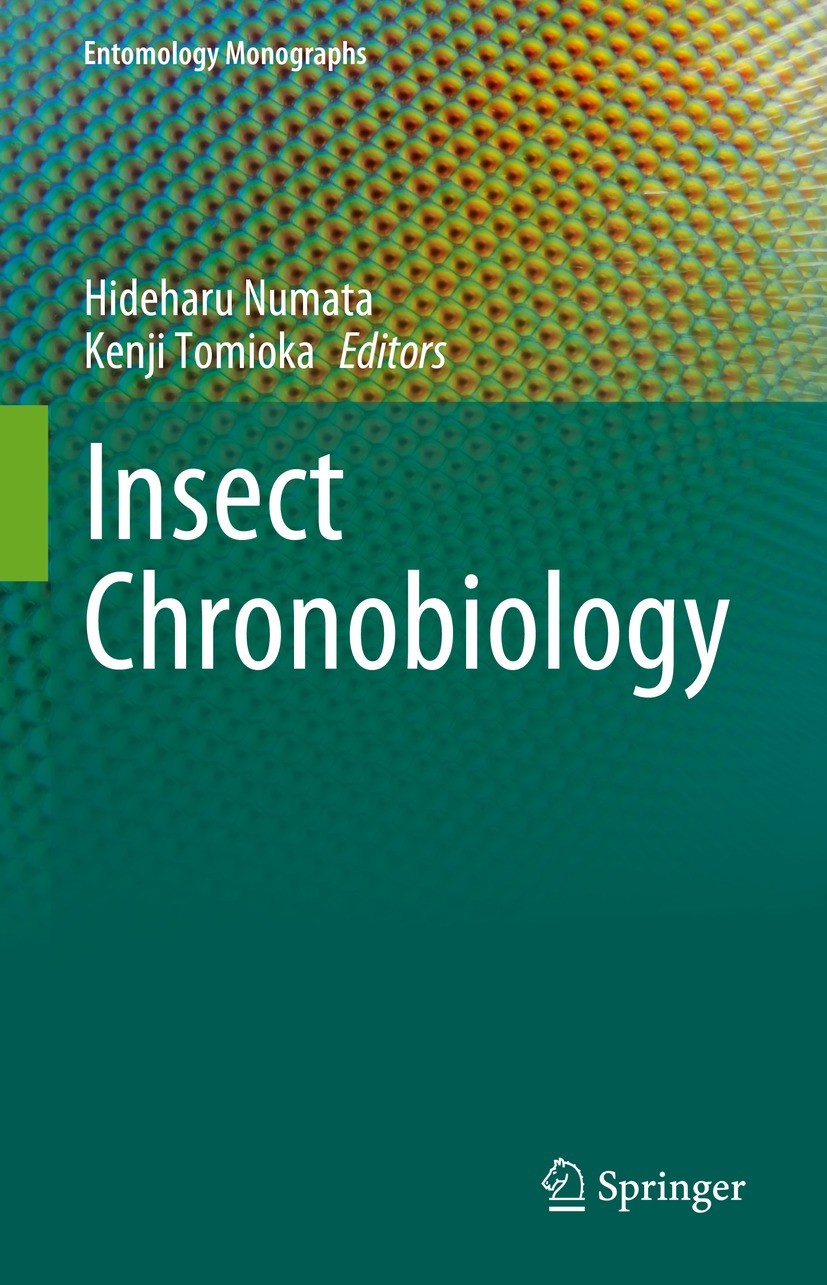| 书目名称 | Insect Chronobiology | | 编辑 | Hideharu Numata,Kenji Tomioka | | 视频video | http://file.papertrans.cn/468/467697/467697.mp4 | | 概述 | Covers diverse insect clocks including circadian clock, lunar clock, tidal clock, photoperiodism and circannual rhythms.Summarizes the recent advances in molecular and neural mechanisms in diverse ins | | 丛书名称 | Entomology Monographs | | 图书封面 |  | | 描述 | This book reviews the physiological mechanisms of diverse insect clocks, including circadian clock, lunar clock, tidal clock, photoperiodism, circannual rhythms and others. It explains the commonality and diversity of insect clocks, focusing on the recent advances in their molecular and neural mechanisms. . .In the history of chronobiology, insects provided important examples of diverse clocks. The first report of animal photoperiodism was in an aphid, and the time-compensated celestial navigation was first shown in the honeybee. The circadian clock was first localized in the brain of a cockroach. These diverse insect clocks also have some common features which deserve to be reviewed in a single book. The central molecular mechanism of the circadian clock, i.e., the negative feedback loop of clock genes, was proposed in Drosophila melanogaster in the 1990s and later became the subject of the Nobel Prize in Physiology or Medicine in 2017. Thereafter, researches on the molecular and neural mechanisms in diverse insect clocks other than the Drosophila circadian clock also advanced appreciably. Various new methods including RNAi, NGS, and genome editing with CRISPR-Cas9 have become app | | 出版日期 | Book 2023 | | 关键词 | Biological clock; Circadian rhythm; Photoperiodism; Circannual rhythm; Circalunar rhythm; Circatidal rhyt | | 版次 | 1 | | doi | https://doi.org/10.1007/978-981-99-0726-7 | | isbn_softcover | 978-981-99-0728-1 | | isbn_ebook | 978-981-99-0726-7Series ISSN 2522-526X Series E-ISSN 2522-5278 | | issn_series | 2522-526X | | copyright | The Editor(s) (if applicable) and The Author(s), under exclusive license to Springer Nature Singapor |
The information of publication is updating

|
|
 |Archiver|手机版|小黑屋|
派博传思国际
( 京公网安备110108008328)
GMT+8, 2025-11-18 05:18
|Archiver|手机版|小黑屋|
派博传思国际
( 京公网安备110108008328)
GMT+8, 2025-11-18 05:18


